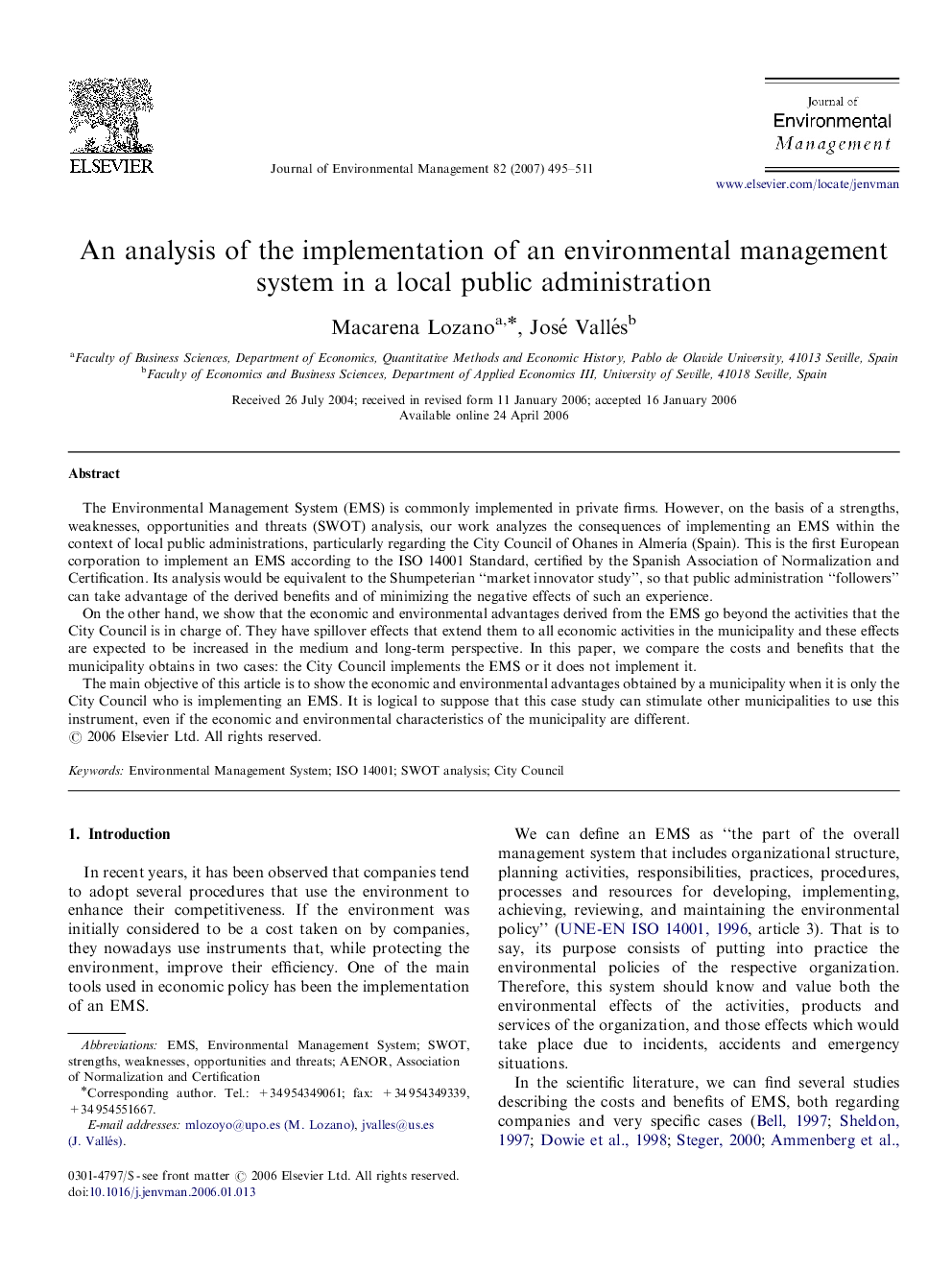| Article ID | Journal | Published Year | Pages | File Type |
|---|---|---|---|---|
| 1058911 | Journal of Environmental Management | 2007 | 17 Pages |
The Environmental Management System (EMS) is commonly implemented in private firms. However, on the basis of a strengths, weaknesses, opportunities and threats (SWOT) analysis, our work analyzes the consequences of implementing an EMS within the context of local public administrations, particularly regarding the City Council of Ohanes in Almería (Spain). This is the first European corporation to implement an EMS according to the ISO 14001 Standard, certified by the Spanish Association of Normalization and Certification. Its analysis would be equivalent to the Shumpeterian “market innovator study”, so that public administration “followers” can take advantage of the derived benefits and of minimizing the negative effects of such an experience.On the other hand, we show that the economic and environmental advantages derived from the EMS go beyond the activities that the City Council is in charge of. They have spillover effects that extend them to all economic activities in the municipality and these effects are expected to be increased in the medium and long-term perspective. In this paper, we compare the costs and benefits that the municipality obtains in two cases: the City Council implements the EMS or it does not implement it.The main objective of this article is to show the economic and environmental advantages obtained by a municipality when it is only the City Council who is implementing an EMS. It is logical to suppose that this case study can stimulate other municipalities to use this instrument, even if the economic and environmental characteristics of the municipality are different.
